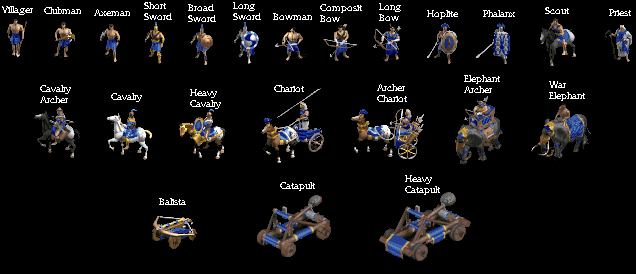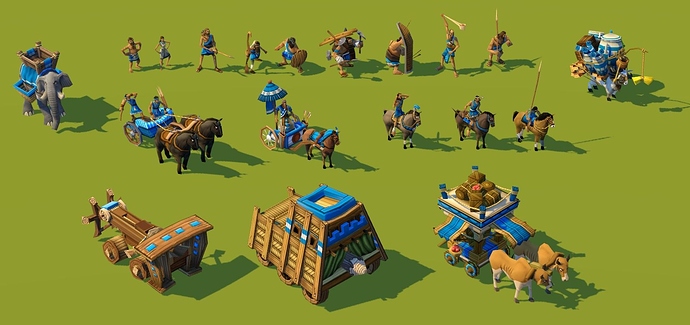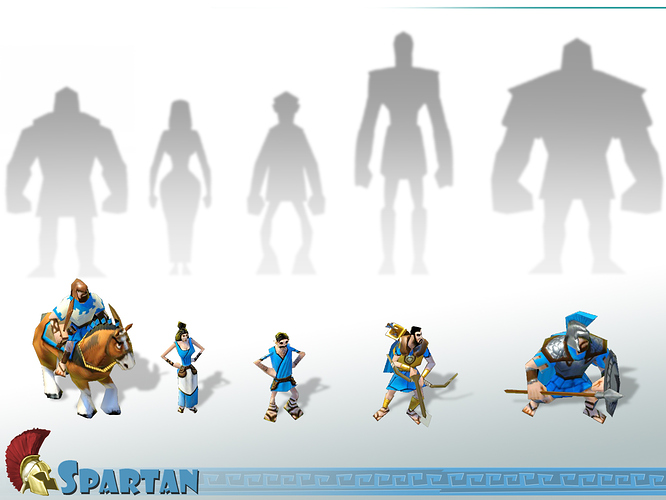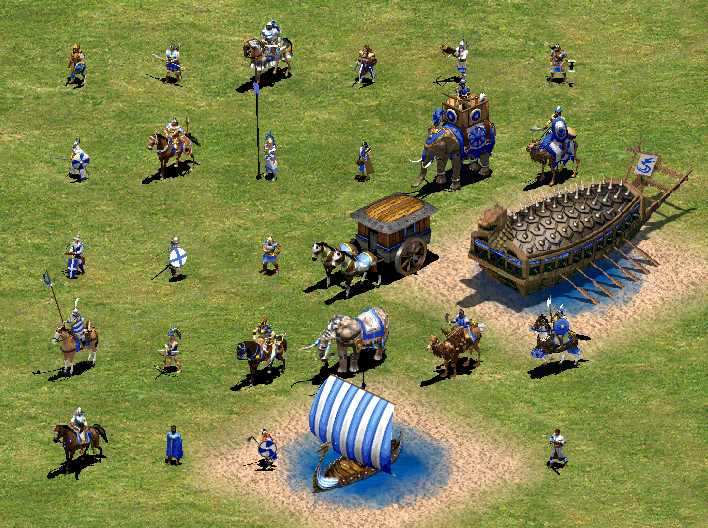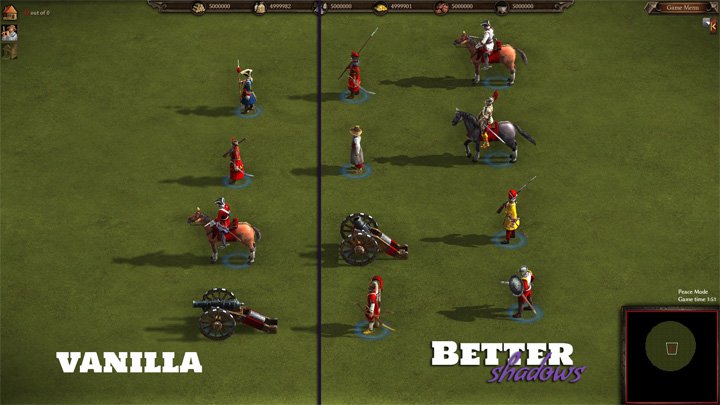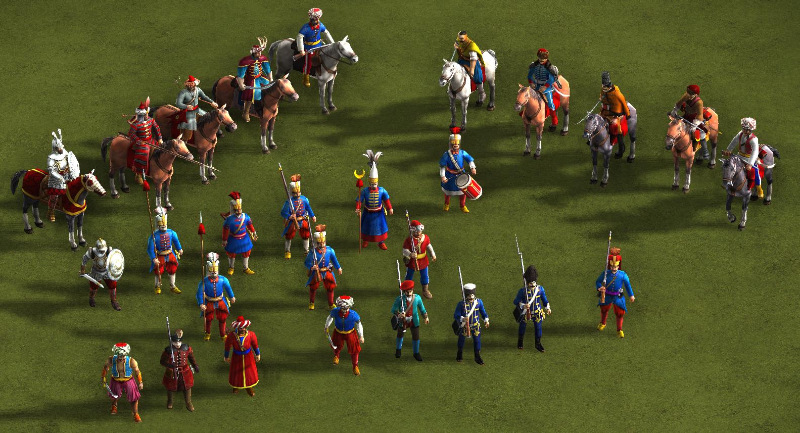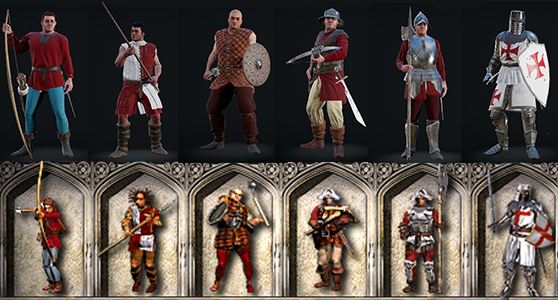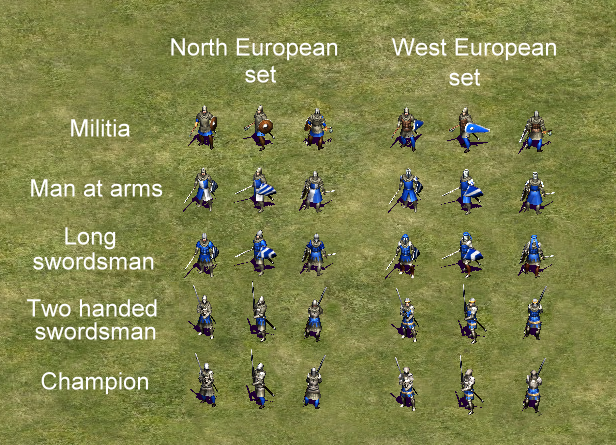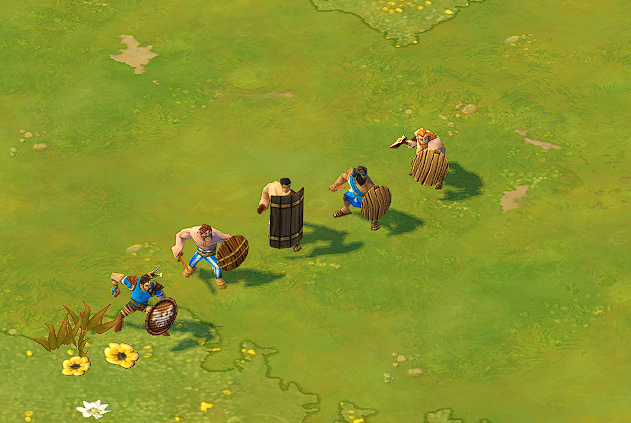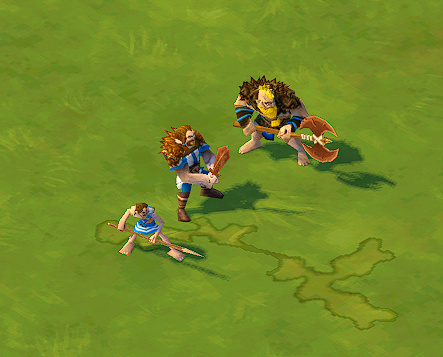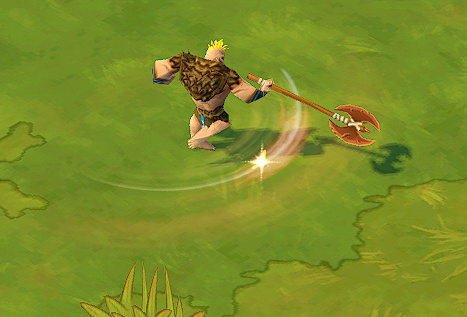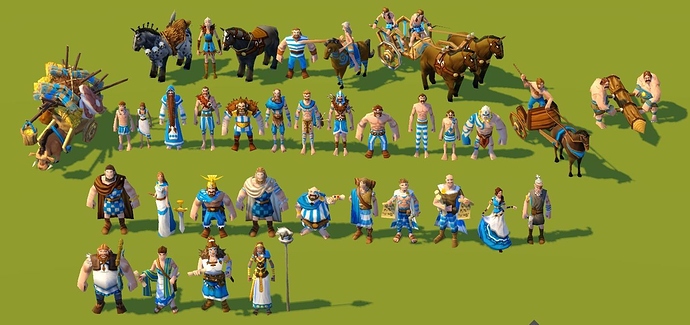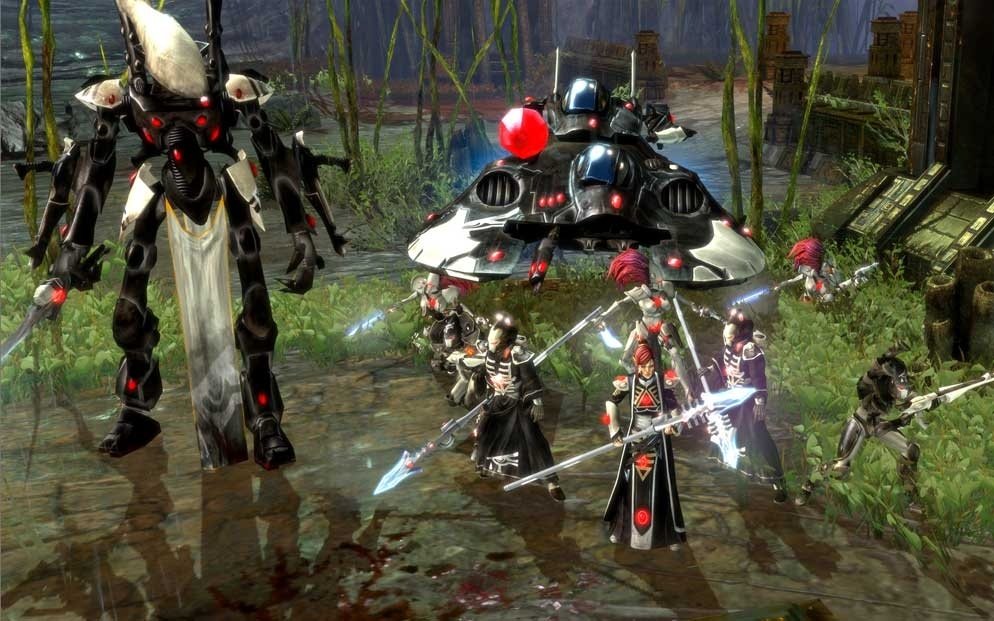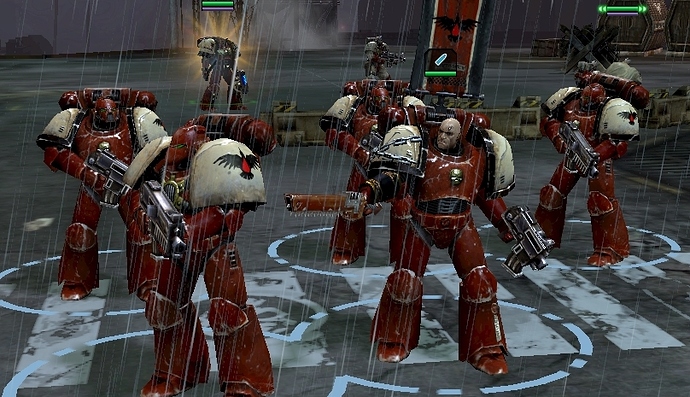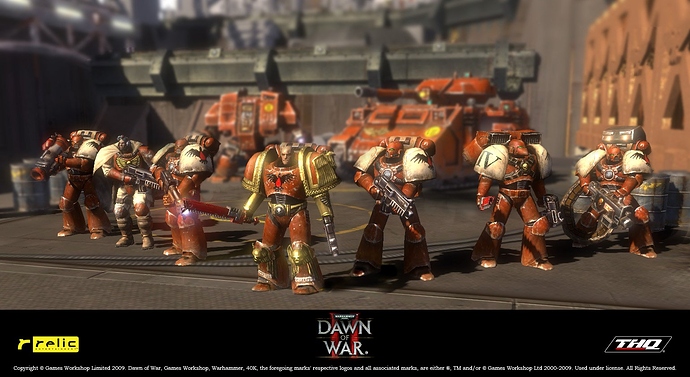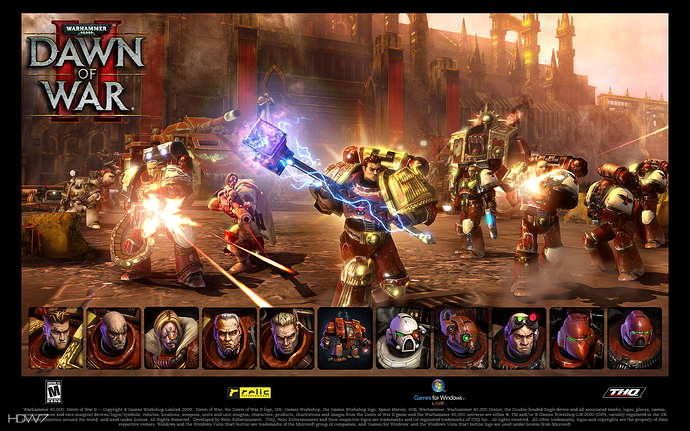Age of Empires Online has to date the best example of balanced, fairly asymmetric civs. Each of AoEO’s six civs share an awful lot in common, feel naturally related, and are easy enough for anyone to pick up and play. But they are each fairly complex and offer a large number of unique features. The civ design in AoEO is as perfect as I have ever seen in this franchise.
Here is way more information on this topic than anyone here wants:
Every civilization in AoEO has 18 buildings except the Norse (16). Looking deeper, we can see that every building falls into one of five categories: Common Buildings, Improved Buildings, Advanced Buildings, Custom Buildings, and Unique Buildings.
======
Common Buildings : The game files tell us that there are 13 buildings that every civilization in Age of Empires Online shall have by default, and that they each shall appear at certain ages. Age 1: Town Center, Storehouse, House, Watch Post, Dock, Wall, and Barracks; Age 2: Market, Farm, Guard Tower, Armory; Age 3: Fortress; Age 4: Wonder.
We call these the Common Buildings, and, in fact, that’s what the game files call them, too. In almost all cases, every Common Building in every civ is identical. However, there are two exceptions, Improved Buildings and Advanced Buildings.
======
Improved Buildings : Sometimes a Common Building in a civ has a special technology or other attribute that improves it a little. Examples of these Improved Buildings are the Persian Storehouse (it heals), the Celtic house (it allows you to Age up), the Babylonian clay Wall (cheaper in Age 1), and the Norse Fortress (Burning Pitch). Arguably the Egyptian Armory is an Improved Building (it has cheaper, combined armor techs) as is the Greek Guard Tower (the Academy gives it Murder Holes and higher health and damage). By our count, every civ so far has one Improved Building.
======
Advanced Buildings : Meanwhile, sometimes a Common Building is replaced by a completely advanced version of that building that is still available in the same age. Examples of Advanced Buildings are the Norse Longhouse (House) and Outpost (Watch Post) and the Babylonian Ox Cart (Storehouse), which is actually a unit that replaces the role of a building).
Other than the 13 Common Buildings, each of the Original 6 civs have 5 other Custom Buildings (except the Norse, who inexplicably have only 3). In almost all cases, every Custom Building is some form of the following: Archery Range, Stables, Siege Workshop, Temple, and Academy (a building with only techs).
Frequently these buildings use civ-specific names (the Sacred Grove and Great Hall are essentially Temples, and the Bard Hall serves as an Academy). Custom Buildings often can become available in either Age 2 or 3 depending on the civ.
======
Unique Buildings : A few Custom Buildings stand out so much that we call them Unique Buildings. Sometimes, Unique Buildings serve as some advanced form of a Common Building that does not actually replace it, such as the Persian Immortal Camp (Barracks), Celtic Gold Mines (Storehouse), and Babylonian Gardens (Farm). Other times, Unique Buildings combine the features of two or three buildings into one (the War Academy trains priests, has tech upgrades, and houses unique toggle techs and the Ziggurat trains priests, has tech upgrades, and ages up). There are five Unique Buildings in the game, and they are available anywhere from Age 1 through Age 3.
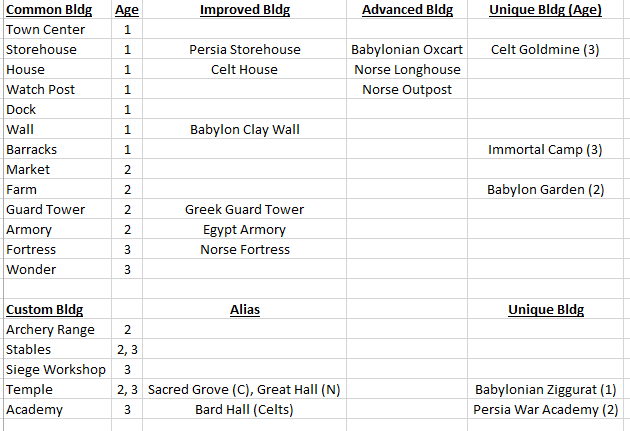
Note that no two civs occupy the same field. Instead, each new civ focuses on different buildings. The civs dance around the chart filling holes and never quite overlapping.
So each civ has about three buildings that do new things (plus a couple that just have unique names).
It also shows that civs got a bit more unique over time. The Greeks (our 1st civ) act like a baseline that every other civ jump off from in different directions. This makes some sense, too. Nobody wants a new civ to feel boring.
Just like with buildings, we started our unit design by first analyzing what everyone could agree on: the designs of the Original 6 Civs. In the game files, every unit is categorized as either a Common Unit, a Military Unit, a Unique Unit, or a Scout. This can be pretty dense reading, so please buckle up.
======
Common Units : Just like Common Buildings, every civilization in AoEO shares the same Common Units. There are four Common Units: Villagers, Caravans, Fishing Boats, and Merchant Transport Ships. Though these units can have small statistical differences in different Civs, to date, no Civ has anything particularly unique with any of them.
======
Military Units : Almost every other unit in the game is a Military Unit, and so most of our analysis focuses on these units. They include all Land Military , Siege , Priests , and Ships .
======
Unique Units : In rare situations, a Civ can have an extra unit that is neither a Military Unit nor one of the Common Units. There are currently three in the game: the Celtic Sacred Deer , the Babylonian Ox Cart , and the Norse Raven .
The total number of units varies among the Civs and ranges from 19 (Celts) to 24 (Norse). However, the four Common Units and Scouts are essentially identical in every Civ.
The game files describe Military Units in three ways: their Class , their Role , and their Attack Type .
======
Classes : There are six different Classes of Military Units in Age of Empires Online: Infantry, Archer, Cavalry, Siege, Priest, and Ship. (You will see below that our analysis adds a 7th Class for those three Unique Units, as well.)
======
Roles : In addition to being a member of a single Class, each unit also has one of 13 different Roles:
-
Basic (e.g. Sparabara, Bowman, Asabara, Trireme)
-
Anti-Infantry (e.g. Hypaspist, Axeman)
-
Anti-Archer (e.g. Slingers, Carpentom)
-
Anti-Cavalry (e.g. Spearman, Camel Riders, Podromos)
-
Ranged (e.g. Mounted Archer)
-
Heavy (e.g. Cataphract, Champion, Sapper, Berserker, Chief)
-
Ram (e.g. Ram and Siege Tower)
-
RangedSiege (e.g. Catapults, Ballista, War Wagon, Catapult Trireme)
-
Trebuchet (e.g. Palintonon, Stone Thrower)
-
HealOnly (e.g. Priestess of Ra, Druid)
-
Unique (e.g. Priest of Set, Unique Units)
-
Convert (e.g. Priest of Ptah, Magus)
-
Anti-Ship (e.g. Ram Ship and Fire Ship)
Note: Certainly any unit can be balanced to have more than one role (an Anti-Cavalry Camel Rider may also be effective against Archers, for example), but for Unit design purposes, it is helpful to see that the original Devs creates the Civs with a specific Role in mind for each Unit.
======
Attack Type : Every unit is assigned one of four different Attack Types: Melee, Ranged, Both (such as Immortals), or None (such as most Priests).
Note: The “None” attack type refers to being able to attack enemy military units and does not include Priests’ ability to attack and kill huntable animals.
Overall, the 7 Classes, 13 Roles, and 4 Attack Types combine for many dozens of possible permutations of Units. So in order to get a handle on how to choose among them, we summarized this information for each Civ and spotted patterns. We don’t have space to go through everything, but let’s take the Greeks as an example since they are considered by most the “baseline” civilization.



So for example, on average, each civ has 7 ranged units, but one civ has just five (Celts) and another civ has as many as nine (Greeks).
For instance, in Age 1, we see there is a rebuttable presumption that a new civ have a single Age 1 Spearman. Though we can certainly go a different direction (like the Persian Sparabara), but if we do so, then that civ would almost certainly need to have at least one Anti-Cavalry unit no later than Age 2. Since most civs have an Age 2 Cav unit, they’d need a counter.
Similarly, if we give a unit an Attack Type of Both (melee and ranged), in order to keep some balance, we likely want to limit the civ to no more than one Age 3 unit (which is exactly what we are doing with the Centurion).
Finally, we also observed a unit design rule whereby if a building trains new units (or technologies) in more than one age, then it trains them in successive ages without ever skipping an age. This is a subtle but super important point. In other words, if a building trains a new unit in Age 2, then it would never skip Age 3 and have the next new unit available only in Age 4. So if the Barracks has an Age 3 Unit, you know it also has an Age 2 Unit. And if a Dock has an Age 4 Ship, it always has an Age 3 Ship, etc. Now this rule is less about overall unit choice and balancing and more about creating a tight, intuitive civ design. And it’s much harder than it sounds to pull off. It’s really tempting to ignore this rule because it creates a hurdle that doesn’t at first seem all that important. I mean, what’s the harm really if a Stable has an Age 2 and Age 4 Unit but skips Age 3? But if you skip an age, it really would feel like a sloppy tech tree that was just thrown together. Unless at some age the building completely stops training new units or techs (such as the Celt Archery Range, which has no Age 4 unit), players intuitively expect a new unit in each successive age. And if this wasn’t really a design rule, then surely some building in one of the Original 6 Civs would have ignored it. Yet every single building follows this rule. And the civs are stronger and more intuitive because of it. Again, breaking this rule won’t necessarily make an unbalanced civ, but it sure would make a disorganized, unpredictable one that lacks the same quality and artistic flourish of the original civs. So we had to follow this rule whether it was convenient or not. And it gave us absolute fits.
This is the kind of hidden detail that tends to go unnoticed until you try to create your own civ and realize something feels terribly wrong.
Building a civ is so much more than coming up with fun ideas and snapping your fingers. Everything has to fit just so. If we were to shift one unit from one Age to another, it would throw off the balance in a different area, requiring us to shift something else. In this way, one little change echoes across the entire tech tree causing all sorts of unexpected headaches. At times it felt like they were using tweezers to move sand from one side of a scale to the other.





